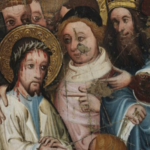An exhibition at the V&A sheds light on the attempt to build – literally – a new postcolonial order in India and Ghana

When Kwame Nkrumah became prime minister of the British colony of the Gold Coast in 1952, you could argue it had been a short time coming. Seven years earlier, in 1945, he had been living in London, organising with other revolutionaries and anti-colonialists, and planning the fifth Pan-African Congress. The driving idea behind pan-Africanism, which dates back to the early 19th century, is the political union of all people of African descent. Yet up to that point, the question of how to achieve such a union remained elusive, lacking as it did any real political means with which to further its aims.
The conference, held in Manchester, proved to be a turning point. Nkrumah, who co-chaired, later recalled that he left “knowing definitely where we were going”. Within a few years, he had returned to his native country and gained political office, off the back of anti-colonial unrest. A few years after that, the Gold Coast became the first country south of the Sahara to gain independence, reborn as the nation state of Ghana, with Nkrumah as its first leader. Nailed firmly to the mast of a wider anti-colonial struggle, pan-Africanism had suddenly found not only its first real political platform but also its chief instigator.
But Nkrumah didn’t want to articulate a new, postcolonial world order through politics alone. He also wanted to build it.
Many of Nkrumah’s earliest initiatives as Ghana’s premier were to do with architecture. In 1952 he opened an architecture school at the Kwame Nkrumah University of Science and Technology (KNUST), inviting some of the world’s most renowned architects to teach there, including American heavyweights Buckminster Fuller, Max Bond and John Lloyd. With strict stipulations that Ghanaians be involved in all public infrastructure projects, he oversaw the construction of other new universities, international conference halls and electric dams – all in a sleek, contemporary mix of concrete and steel. Yet the architectural style that would become ubiquitous under Nkrumah’s rule – known as tropical modernism, and the subject of a new exhibition at the Victoria & Albert Museum – in fact preceded Nkrumah’s ascent to power and came from a very different ideological place.
Starting from the mid-1940s, modernism had first made its way to West Africa via a duo of British architects and the “civilising” auspices of colonial town planning. Jane Drew and Maxwell Fry oversaw the design of many universities, hospitals and other institutions across what are now Sierra Leone, Nigeria, the Gambia and Ghana. Although initially funded by the British Colonial Office, the pair continued to influence architecture in the region after many colonies had gained independence from the UK in the 1940s and 50s.
Drew and Fry were the most prominent exponents of modernism back home. To them, the only real differences between “tropical” modernism and its more temperate variants were of a purely practical nature. How do we create cross-ventilation? Does our grand throughfare offer enough shade? They were otherwise blinkered to questions of local history, identity and place to an almost comical degree, once remarking that “there seemed to be no indigenous architecture” in the region and that it was thus their solemn duty to invent one. (That they heavily relied on a local workforce and local architects to help carry out their plans seems not to have factored into their thinking.)
This all being said, tropical modernism did mark one of the earliest instances of architects from the industrialised world taking climate seriously in their designs, with what the V&A’s curator Christopher Turner tells me was a “climate-responsive architecture that sought to work with rather than against climate”. From this developed a sort of incidental beauty, uncommon to European modernism, with the application of techniques like brise soleil (perforated concrete walls), which offered shade and natural light and also the opportunity for decorative stonework. At Drew and Fry’s University of Ibadan in Nigeria, for instance, one wall of patterned stone lines a hallway to the library; at the right time of day, the hallway becomes dappled in a dramatic tessellation of shadows, as light shines through the gaps.
Many of the designs in Drew and Fry’s brise soleil were drawn from traditional African pattern work. In Ghana these mostly made use of Adinkra symbols, which represent concepts and proverbs – such as a ram’s horns to represent strength and humility, or four crosses representing berries to reference the proverb “Sweetness does not stay in the mouth for ever”. The idea may have been sound, or even well-intentioned. Unfortunately, the couple’s inability to see such symbolism as anything other than “relics of a beautiful, savage life” led almost invariably to pastiche, with imagery applied arbitrarily to vast swathes of areas with little thought as to its relevance or context.
Even so, it was perhaps because tropical modernism appeared amenable to holding the traditional and the modern simultaneously that Nkrumah was so drawn to it, and why he saw the potential to repurpose it into a new architectural lexicon that could appeal beyond Ghana’s borders.
One of the primary aims of the KNUST – the first architectural school in sub-Saharan Africa – was to “teach a new generation how to create monuments of pan-Africanism,” says Turner. It was there that Ghanaian architects – most of whom originally trained at western schools like London’s Architectural Association – began to craft a syllabus that was better attuned to local needs and culture.
Exemplifying the ethos of this new syllabus was the KNUST’s own Senior Staff Clubhouse, designed by Ghanaian architect John Owusu Addo with Miro Marasović. Showcasing typical tropical modernist traits like brise soleil and a white square façade, the interior by contrast made generous use of dark panels of wood, cutting the austerity of concrete with a natural warmth and signalling a place of gathering as much as a symbol of progress. It was through this and other buildings like it that Ghanaian architects embarked on what Turner calls an “almost Oedipal reaction” to their old European professors, as forging “a national identity through architecture became an intellectual project”.
The V&A show is keen to point out that Nkrumah was not alone in this intellectual project. Gaining independence from Britain a decade earlier, in 1947, India’s inaugural prime minister Jawaharlal Nehru was also obsessed with architecture. Like Nkrumah, he invited famous western architects and designers to help him build the India of the future, including not just Drew and Fry but also the Bauhaus architect Walter Gropius, the American designer power couple Charles and Ray Eames and – perhaps the arch-modernist of the lot – the visionary architect and urban planner Le Corbusier. Most notable among the many projects they were tasked with was their combined efforts developing a new, planned state capital of Chandigarh in the Punjab.
Le Corbusier’s contributions to tropical modernism, particularly Chandigarh’s Palace of the Assembly – now a UNESCO World Heritage site and a place of pilgrimage for modernist enthusiasts – make up some of the style’s most iconic examples. A monumental structure surrounded by rectangular ponds, the palace’s entrance plaza rises in a sweeping curve of concrete held aloft by intermittent columns, like the hull of a ship propped high on stilts. Looming above it all sits a giant concrete cylinder cut slantwise, reminiscent of a nuclear cooling tower or a tube of lipstick.
But apart from a few landmark buildings that continue to be used and admired, the truth is that the story of tropical modernism is – like the story of modernism as a whole – a story of failure. Buildings as ciphers for grand nation-building ideas are all fine and well, but at the end of the day people still need to live in them, and modernists were usually more interested in crafting a new way of living than in understanding how people lived in the here and now. For all the expectations some of them placed on how people ought to behave, they might as well have been designing prisons. As the Indian architect Aditya Prakash remarked on seeing some of Le Corbusier’s more eccentric proposals for Chandigarh, which included banning street markets and livestock: “It’s a place for gods to play; not humans.”
In the end, a modernist experiment on the scale and grandiosity of Chandigarh went unrepeated in India. For Nkrumah in Ghana, recession due to slumping cocoa prices combined with an increasingly authoritarian leadership style led to his ousting by coup in 1966.
The cause of pan-Africanism would find other torchbearers in the decades to follow, most notably Muammar Gaddafi in Libya, but never again would it be linked so closely and cohesively to one aesthetic sensibility. While Turner argues that economic turmoil was the decisive factor in tropical modernism’s fall from grace, it is perhaps ironic that, in the eyes of some Ghanaian architects at least, it was Nkrumah’s over-emphasis on the political dimension that impeded its sustained development. “He was a very good African,” Owusu Addo remarked, “but a very poor Ghanaian.”
It’s also striking that western “starchitects” featured prominently in India and Ghana’s architectural initiatives, even as they sought to reclaim non-western perspectives. Modernism might have laid claim to a universal human experience – one that proved enticing enough to postcolonial leaders who wanted to showcase their entry into the “modern” world order – but it was fundamentally rooted in a westernised idea of what even qualified as modern. The exhibition leaves you feeling that tropical modernism could never fully have betrayed its latent Occidentalism. Perhaps its real legacy is the moral lesson it provides: that architecture should be first and foremost responsive to the environment in which it is found, both the human and the ecological. But so long as architecture remains the vector of choice onto which we project our hopes and dreams – and political leaders find reason to call themselves the “architects” of their nation state – it’s probably one of those lessons we’ll have to keep relearning.
“Tropical Modernism” is at the V&A South Kensington, London, until 22 September. This article is from New Humanist’s summer 2024 issue. Subscribe now.


